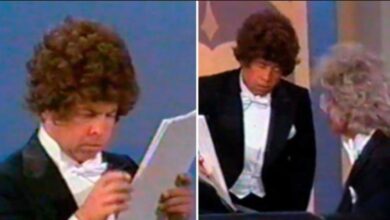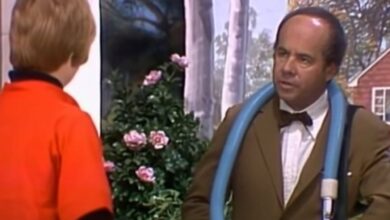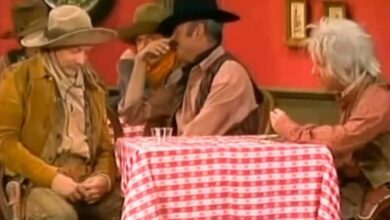The Beatles’ “I Want to Hold Your Hand” Ignites Beatlemania and Redefines Global Pop Culture in 1963
When “I Want to Hold Your Hand” was released in the United Kingdom on November 29, 1963, and in the United States on December 26, it marked a pivotal moment not just in The Beatles’ career but in the entire trajectory of modern popular music. The song didn’t merely climb the charts—it launched a cultural tidal wave. By January 1964, it had soared to number one on the Billboard Hot 100, staying there for seven weeks and becoming the first Beatles track to truly crack the American market. More than a chart-topper, “I Want to Hold Your Hand” was the spark that lit the fire of Beatlemania across the Atlantic.
The Beatles—John Lennon, Paul McCartney, George Harrison, and Ringo Starr—had spent the early 1960s building their reputation in the clubs of Hamburg and Liverpool. Their early UK singles like “Please Please Me” and “She Loves You” had already made them national icons. But it was their first major push into the American market that would elevate them to international superstardom. Known for their infectious melodies, playful charisma, and the dynamic Lennon-McCartney songwriting partnership, The Beatles were poised to redefine what a pop group could be.
The creation of “I Want to Hold Your Hand” came during a critical phase. The Beatles had yet to conquer America, and their manager Brian Epstein knew that cracking the U.S. charts was essential. Lennon and McCartney wrote the song side by side, reportedly on a piano in the basement of Jane Asher’s house (McCartney’s then-girlfriend). They aimed for something more polished, more anthemic, and more suited to American tastes than their earlier UK hits.
Recorded at Abbey Road Studios in October 1963, the song was produced by George Martin, who had already become a quiet genius behind their evolving sound. The recording featured electric rhythm guitar by John Lennon, a driving handclap rhythm, and an explosive vocal blend of Lennon and McCartney that exuded youthful energy. The arrangement was tighter, cleaner, and more radio-friendly than previous efforts—intentional choices meant to attract American listeners.
The song was an instant hit. In the UK, it was their fourth number one single. But its American success was something altogether different. After being played on Washington D.C.’s WWDC radio station before its scheduled release—thanks to a savvy teenage listener who brought it back from the UK—it exploded. Capitol Records, initially hesitant about promoting the group, rushed the release. The song sold over a million copies in just ten days in the U.S.
Its success was perfectly timed. Just weeks after the tragic assassination of President John F. Kennedy, the United States was desperate for something joyful, fresh, and electrifying. The Beatles offered exactly that. Their arrival on American shores in February 1964 and their subsequent appearance on The Ed Sullivan Show cemented their place in American hearts. “I Want to Hold Your Hand” was the anthem of their welcome.
The song’s infectious simplicity—the opening guitar riff, the earnest chorus, the call-and-response structure—broke genre boundaries. It appealed not only to teenagers but also to parents and critics who were surprised by its melodic sophistication. The Beatles, once dismissed by skeptics as just another British novelty act, had proven their universal appeal.
This single didn’t just open doors—it kicked them down. After “I Want to Hold Your Hand,” American radio couldn’t get enough of the Fab Four. It ushered in the British Invasion, paving the way for other UK acts like The Rolling Stones, The Kinks, and The Who to find stateside success. The Beatles’ U.S. dominance fundamentally changed the global music industry.
Other artists quickly took note. The harmonies, songwriting structure, and production techniques of “I Want to Hold Your Hand” became templates for countless acts throughout the ‘60s. It helped spark the shift from solo singers to band-centric pop. Even established American artists started adapting their style to align with this new sound.
The song has been covered by numerous artists, including Al Green, The Supremes, and even T.V. Carpio in the Across the Universe film adaptation. Each rendition highlighted the song’s versatility—able to be reimagined in soul, Motown, jazz, and cinematic pop, all while retaining its core emotional impact.
At the time of the song’s release, The Beatles were still several years away from their psychedelic phase, but “I Want to Hold Your Hand” marked their transition from local heroes to international pioneers. It came just before their move toward more sophisticated compositions like “Yesterday” and “In My Life,” yet showed early hints of their ability to blend mass appeal with artistic intention.
Over the decades, “I Want to Hold Your Hand” has retained its iconic status. It routinely appears in “greatest songs of all time” lists and is widely considered one of the most important singles in the history of recorded music. It is still played on radio, in film soundtracks, and during historical retrospectives about the 1960s.
In terms of music history, the track signaled a turning point. It helped usher in the modern era of pop music as an international phenomenon. The way it united global audiences around a new sound, image, and attitude laid the groundwork for the globalized pop culture we know today.
The Beatles would go on to reinvent themselves multiple times throughout the next decade, but “I Want to Hold Your Hand” remains the key that unlocked the world stage. It captured a moment of cultural shift—bridging continents, generations, and genres.
To this day, the track is more than a nostalgic artifact. It’s a symbol of possibility, of connection, and of the sheer joy that music can bring. For The Beatles, it marked the true beginning of their dominance. For the world, it was the sound of something entirely new taking flight.





